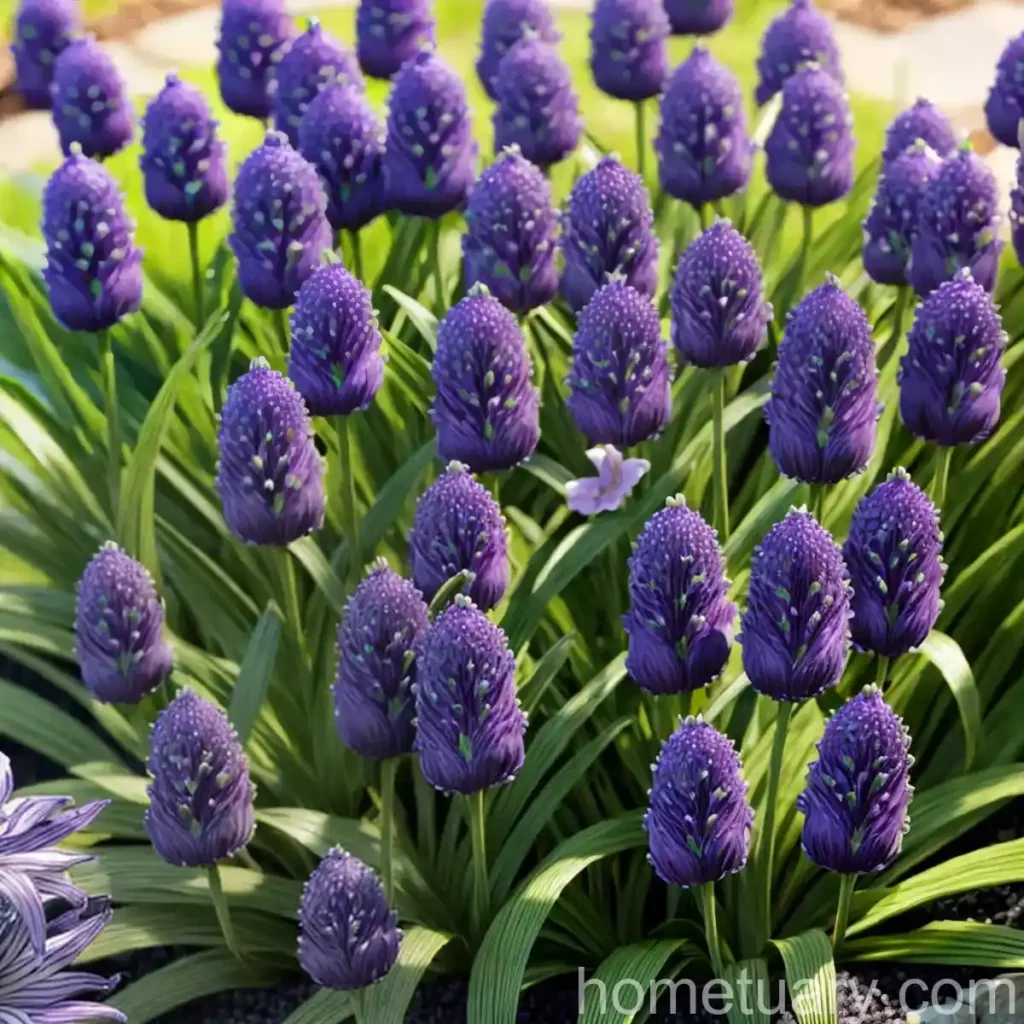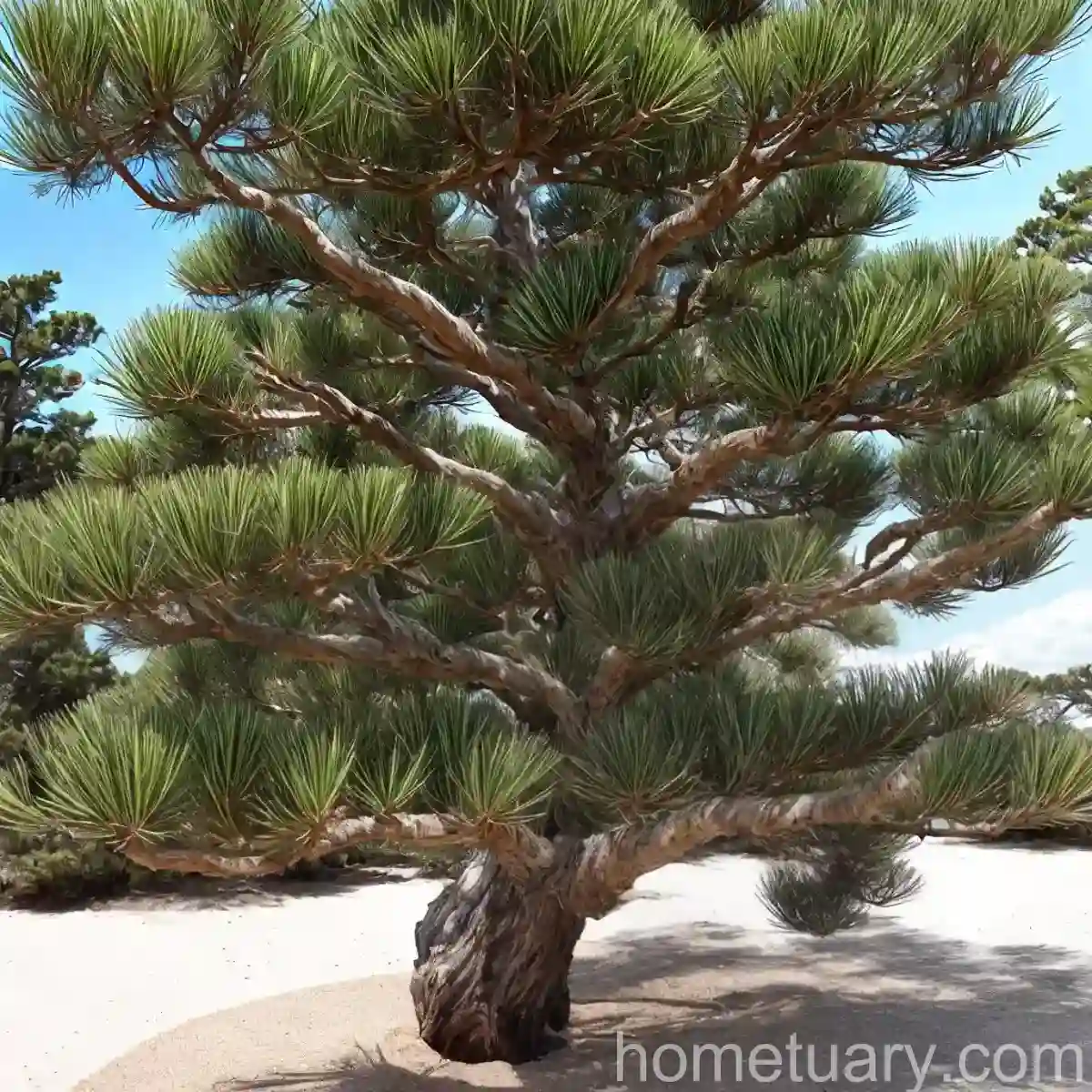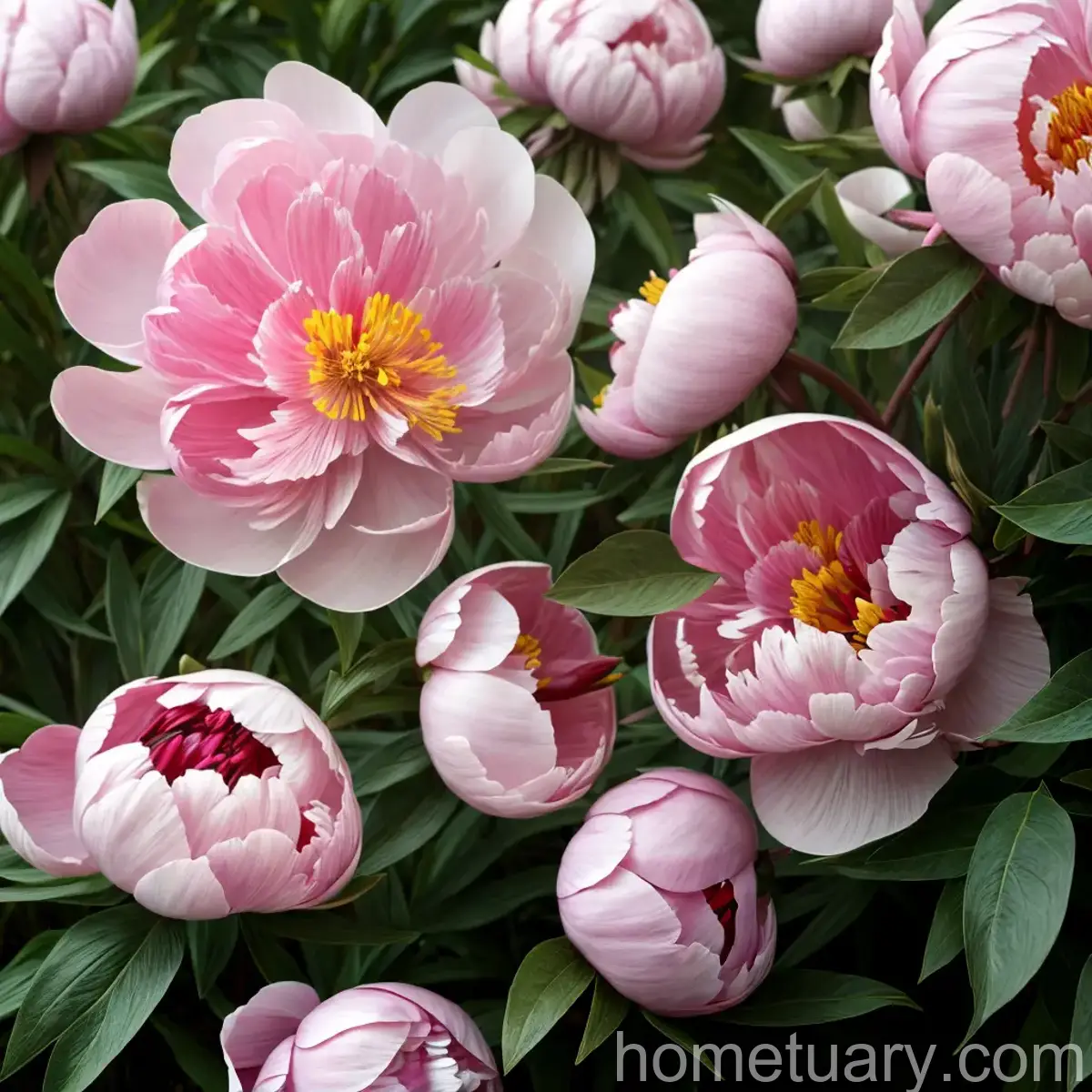Lily Turf (Liriope muscari ‘Royal Purple’): A Complete Guide
Lily turf, scientifically known as Liriope muscari ‘Royal Purple,’ is a versatile and appealing plant that has gained popularity in landscaping and gardening. This ornamental grass is prized for its vibrant and showy foliage, as well as its ability to thrive in various conditions. In this comprehensive guide, we will explore the culture, uses, maintenance, propagation, common diseases, and more about the captivating lily turf.
Key Takeaways
Before delving into the specifics, let’s highlight some key takeaways about the lily turf (Liriope muscari ‘Royal Purple’):
- Culture: Lily turf is an adaptable and low-maintenance plant that thrives in a variety of settings, making it a popular choice for landscaping.
- Uses: It is commonly used as a ground cover, border plant, or container plant, adding texture and color to gardens and outdoor spaces.
- Water: Lily turf prefers moderate watering and is somewhat drought-tolerant once established.
- Sunlight: While it can tolerate shade, it performs best in partial to full sunlight.
- Fertilizer: Minimal fertilization is sufficient for lily turf, making it an economical choice for gardeners.
- Soil: It thrives in well-draining soil and is adaptable to different soil types.
- Pruning: Pruning is recommended in early spring to promote new growth and maintain the plant’s shape.
- Propagation: Lily turf can be propagated through division, making it an excellent option for expanding your garden or sharing with others.
- Container Popularity: It is well-suited for container gardening, offering a versatile option for urban and small-space gardens.
- Common Diseases: While generally resilient, lily turf may be susceptible to specific diseases such as root rot and leaf spot.
- Common Pests: Spider mites and aphids are potential pests that can affect lily turf plants.
This guide will provide detailed insights on these key aspects and more, equipping you with the knowledge to cultivate and appreciate the beauty of lily turf in your own garden.
What is Lily Turf (Liriope muscari ‘Royal Purple’)?
Liriope muscari ‘Royal Purple,’ commonly referred to as lily turf, is a flowering plant native to East Asia. Belonging to the Asparagaceae family, it is recognized for its tufted, grass-like foliage and dense, upright flower spikes. This evergreen perennial exhibits striking purple foliage, adding a touch of elegance to gardens and landscapes.
The Royal Purple variety of lily turf is particularly cherished for its vivid and enduring foliage color, making it a sought-after choice for ornamental plantings. Its hardiness, adaptability to diverse conditions, and low-maintenance nature have contributed to its popularity among gardeners and landscapers.
Now, let’s delve into the various aspects of lily turf culture, uses, maintenance, and more, providing comprehensive insights into maximizing the potential of this captivating plant.
Culture
Understanding the ideal cultural conditions for lily turf is pivotal for fostering its growth and maximizing its ornamental appeal. Here are some essential aspects of lily turf culture to consider:
Water
- Watering Needs: Lily turf plants prefer moderate and consistent watering, particularly during their establishment phase. Once established, they exhibit some drought tolerance, making them suitable for regions with varying water availability.
- Soil Moisture: It is important to maintain a well-drained but evenly moist soil environment, especially during hot and dry periods, to support the plant’s health and vigor.
Sunlight
- Sun Exposure: While lily turf plants can tolerate shade, they thrive in partial to full sunlight. Providing ample sunlight encourages robust growth and vibrant foliage coloration, enhancing their visual appeal in garden settings.
Fertilizer
- Fertilization Practices: Lily turf typically doesn’t require heavy fertilization. Applying a balanced and slow-release fertilizer in early spring can support healthy growth and foliage development. It is advisable to avoid excessive fertilization to prevent potential issues.
Soil
- Soil Preferences: Lily turf adapts well to various soil types, thriving in well-drained and loamy soils. Maintaining soil pH within the slightly acidic to neutral range (pH 5.5 to 7.0) contributes to optimal growth conditions for this versatile plant.
Pruning
- Pruning Requirements: Pruning lily turf plants in early spring before the onset of new growth helps maintain their shape and promotes fresh foliage. Removing any winter-damaged or discolored leaves enhances the plant’s overall appearance.
Uses
The versatility of lily turf makes it suitable for a range of practical and aesthetic uses in landscaping and gardening. Let’s explore the diverse uses of lily turf (Liriope muscari ‘Royal Purple’):
Ground Cover
- Ornamental Ground Cover: The dense and low-growing nature of lily turf makes it an excellent choice for ground cover applications. It effectively fills in spaces, suppresses weed growth, and adds a splash of color and texture to the landscape.
Border Plant
- Border and Edging: With its compact habit and attractive foliage, lily turf serves as an appealing border plant, defining garden beds and pathways with its lush and uniform growth.
Container Plant
- Container Gardening: Lily turf’s adaptability to container culture makes it an ideal option for patio gardens, urban landscapes, and small-space gardening. It adds a vibrant and low-maintenance element to container arrangements.
Landscaping
- Landscape Design: Incorporating lily turf in landscape designs provides a versatile and visually striking element. It can be used in mass plantings, under trees, or along slopes, offering an enduring and appealing landscape feature.
Companion Plants
- Complementing Other Plants: Lily turf can be paired with a variety of companion plants, such as flowering perennials or shrubs, to create visually captivating and harmonious garden displays. Its rich purple foliage contrasts beautifully with other greenery and floral elements.
Propagation
The ability to propagate lily turf through various methods allows for expanding its presence in gardens and sharing its beauty with others. Here are the primary propagation methods for lily turf (Liriope muscari ‘Royal Purple’):
Division
- Propagation by Division: Dividing mature lily turf clumps in early spring or fall is a simple and effective way to propagate the plant. Carefully separating the dense clumps into smaller sections with healthy roots enables the cultivation of new plants for use in additional garden areas.
Container Popularity
The adaptability of lily turf to container culture enhances its appeal for urban and small-space gardening, offering flexibility and visual interest in various settings. Here are some insights into the popularity of lily turf in containers:
-
Versatile Container Plant: Lily turf’s restrained growth habit and appealing foliage make it well-suited for container gardening. It thrives in containers placed on patios, balconies, or as a focal point in outdoor living spaces.
-
Design Element: Incorporating lily turf in containers allows for creative design options, such as combining it with flowering annuals, grasses, or foliage plants to create attractive and long-lasting container arrangements.
Common Diseases
While lily turf is generally resilient, it may be susceptible to specific diseases that can impact its health and appearance. Understanding common diseases and their management is essential for maintaining the vitality of lily turf plants. Let’s explore common diseases affecting lily turf:
Disease Diagnosis
-
Root Rot: Excessive soil moisture or poor drainage can lead to root rot in lily turf. Symptoms include wilting, yellowing foliage, and stunted growth. Proper watering practices and improving soil drainage help prevent and manage root rot.
-
Leaf Spot: Fungal leaf spot diseases, characterized by dark spots on the foliage, can occur in conditions of high humidity and poor air circulation. Pruning affected leaves, promoting good air flow, and avoiding overhead watering aids in controlling leaf spot diseases.
Common Pests
In addition to diseases, lily turf plants may be vulnerable to certain pests that can impact their growth and appearance. Understanding potential pests and implementing appropriate pest management practices is crucial for preserving the health and aesthetic appeal of lily turf. Let’s discuss common pests that can affect lily turf:
-
Spider Mites: These tiny pests can infest lily turf plants, causing stippling and discoloration of foliage. Regular monitoring and using insecticidal soap or horticultural oils help manage spider mite infestations.
-
Aphids: Aphids may feed on lily turf foliage, leading to distortion and stunting of new growth. Natural predators, such as ladybugs, and the application of insecticidal soaps aid in controlling aphid populations.
Botanist’s Tips
Successful cultivation of lily turf (Liriope muscari ‘Royal Purple’) can be enhanced by incorporating strategic practices and insights from experienced botanists. Here are some expert tips for cultivating and caring for lily turf:
-
Consistent Monitoring: Regularly monitoring the plant for signs of diseases, pests, or nutrient deficiencies enables proactive management and helps maintain the plant’s vigor.
-
Prudent Watering: Overwatering can be detrimental to lily turf, so it is essential to follow a consistent watering schedule and adjust based on environmental conditions.
-
Proper Pruning: Pruning lily turf plants in early spring is crucial for rejuvenating the foliage and promoting healthy new growth. Employing sharp and sanitized pruners aids in maintaining plant health.
Fun Facts
Let’s conclude with some engaging and intriguing facts about lily turf (Liriope muscari ‘Royal Purple’):
- Lily turf foliage is reminiscent of ornamental grasses, adding textural interest to garden compositions.
- The Royal Purple variety of lily turf exhibits exceptional color intensity, retaining its vibrant hue throughout the growing season.
- Lily turf is known for its resilience, withstanding moderate foot traffic when utilized as a ground cover.
Understanding the vibrant and enduring qualities of lily turf enriches the gardening experience and fosters an appreciation for this captivating plant.
Links to External Resources
For further in-depth insights and practical guidance on lily turf (Liriope muscari ‘Royal Purple’), we recommend exploring the following external resources:
- The Spruce – Lily Turf Plant Profile
- North Carolina State University Extension – Liriope muscari (Lilyturf)
- University of Florida IFAS Extension – Liriope muscari ‘Royal Purple’
These reputable sources provide valuable information, care tips, and best practices for cultivating and enjoying the beauty of lily turf in diverse garden settings.
In conclusion, lily turf (Liriope muscari ‘Royal Purple’) embodies enduring charm and adaptability, making it a cherished component of ornamental landscapes and garden designs. By integrating the insights and recommendations outlined in this comprehensive guide, gardeners can cultivate, appreciate, and celebrate the allure of lily turf in their own outdoor spaces.















